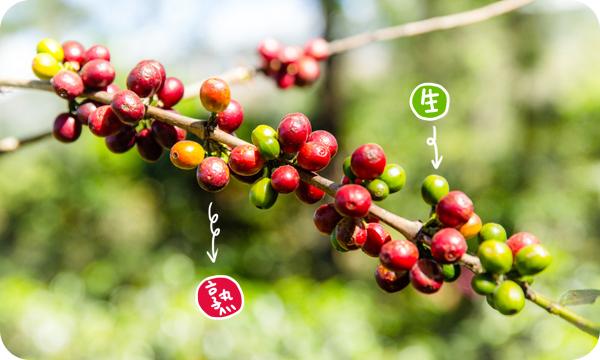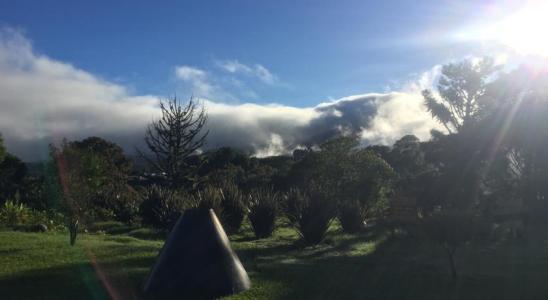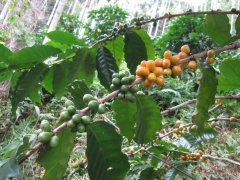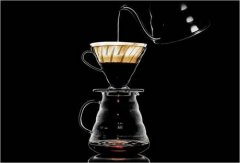How to check whether the coffee beans you bought are fresh and choose a cup of coffee that makes you feel at ease
For professional baristas, please follow the coffee workshop (Wechat official account cafe_style)

3 elements to easily check the quality of coffee
1. Check the appearance of coffee beans
Do you have any experience of buying coffee beans in shopping malls or chain stores? If you are not in the store or ask the store to grind it, do you often see broken coffee beans when you bring them home to grind them? If there are a lot of coffee beans in this situation... Yes, the coffee you buy is definitely of poor quality.
The reason for the formation of broken beans?
Many defective raw beans will form broken beans after baking, such as those that are severely worm-eaten or crushed by improper external forces (usually machines) during production. Because of the defects, the water content of the bean body will be less and less sturdy, and it will burst easily because of the high temperature in the baking process.
These are still visible defects, and there are more health hazards that cannot be seen after baking. For example, raw beans that are moldy (such as black in the above picture) or fermented (brown in the above picture) may still leave bad substances such as aflatoxin and ochratoxin after baking at high temperature. If you drink this bad quality coffee for years, these non-metabolized toxins can be deadly and must be prevented.
Make it at home and grind the beans when you drink it.
The first step to drinking good coffee is... Buy your own beans and grind them home. You can't see the appearance and freshness of the beans when you drink freshly brewed coffee. And in the store or ask the shop owner to grind the coffee beans, just can let the shop owner "destroy the body" … Because you can't see any defects when you grind them.
If you don't have the experience of tasting good coffee or the skills of a professional cup tester, buying coffee beans that you can see and smell is the best way to protect yourself.

2. Storage mode of coffee beans
Coffee has a short shelf life (see the overview of boutique (top) coffee for details). Chain stores pour deep-baked beans directly into a covered but unsealed plastic container on the coffee machine. So, in fact, there is no way to tell that the cup of coffee delivered to the hand is brewed with coffee beans for how long.
The correct way to preserve cooked beans
One-way breathable valve bag (freshly roasted coffee beans will continue to produce carbon dioxide within 1-2 weeks after baking. The package with an one-way breathable valve device has a design that allows carbon dioxide to be discharged smoothly out of the bag while blocking external oxygen)
A more "like" way of preservation.
Separate the beans in multiple glass sealed cans (such as "love flavor vacuum glass cans", which should be washed, dried, and determined to be tasteless). Use only one can at room temperature at a time and refrigerate the rest. Use one can and then take one out of the fridge and use it. Do not take it in and out of the refrigerator, because the temperature difference causes the water to condense on the bean surface to affect the flavor, but not good.
Important reminder!
Coffee beans are always easier to store and keep fresh than coffee powder. How much to drink and how much to grind in order to enjoy the best coffee at any time.

3. Coffee bean / powder shelf life (important! important! Important!)
Friends who often buy coffee beans or coffee powder to brew at home can pay more attention to the following two points of packaging marking.
Dare not mark [date of manufacture]
Because the shelf life of roasted coffee is very short. Especially for the larger operators, the more difficult it is to manage inventory. There is a manufacturing date on the package, so it is easy for consumers to "intuitively" know that the beans they bought have been made and placed for a long time. Therefore, the best way is to write only the expiration date and expiration date once and for all.
Preservation period [lengthy]
The shelf life of coffee beans / powder purchased in the market is usually one year, regardless of whether it is roasted deeply or lightly. Whether the beans that have been kept for a year can be used? When the cooked beans are stored in the best storage conditions (vacuum, cold storage) for three months, the coffee has gone off-flavor and smelly of oil.
So what is the shelf life of well-known multinational coffee chains? The answer is 238 days. How did you figure it out? The more reasonable answer is... Compared with most companies labeling for a year (365 days), 238 days looks fresh and preservative-free, that's all. In fact, because it unifies the way of distribution after baking in the United States, long-distance freight, and then through layers of domestic management and distribution. The ripe beans that can be bought in the store are also "long past" the suitable drinking period. You can't ignore it!
Important Notice :
前街咖啡 FrontStreet Coffee has moved to new addredd:
FrontStreet Coffee Address: 315,Donghua East Road,GuangZhou
Tel:020 38364473
- Prev

Instant coffee has all kinds of flavors. why do we choose to brew it ourselves?
The exchange of professional baristas please pay attention to the coffee workshop (Wechat official account cafe_style) instant coffee already has a variety of coffee products, is it necessary to brew it yourself? The following is the result of the discussion, see if you agree with it? Of course, it is necessary to like strong and light, and adjust by yourself. if you don't think the taste of instant coffee is too light, that's good. Coffee brewing suggestion
- Next

Four tips on how to brew a good cup of coffee to help you become an expert in hand
Professional barista communication please pay attention to coffee workshop (Wechat official account cafe_style) skill 1: grinding beans is the first step of handmade coffee, but it is also a step that many people are easy to fail, either too fine or too thick, which indirectly affects the taste of cooking. If you want to accurately grasp the size of coffee powder, you can use a Pegasus or Pegasus bean grinder to adjust the coffee powder.
Related
- Beginners will see the "Coffee pull flower" guide!
- What is the difference between ice blog purified milk and ordinary milk coffee?
- Why is the Philippines the largest producer of crops in Liberia?
- For coffee extraction, should the fine powder be retained?
- How does extracted espresso fill pressed powder? How much strength does it take to press the powder?
- How to make jasmine cold extract coffee? Is the jasmine + latte good?
- Will this little toy really make the coffee taste better? How does Lily Drip affect coffee extraction?
- Will the action of slapping the filter cup also affect coffee extraction?
- What's the difference between powder-to-water ratio and powder-to-liquid ratio?
- What is the Ethiopian local species? What does it have to do with Heirloom native species?

